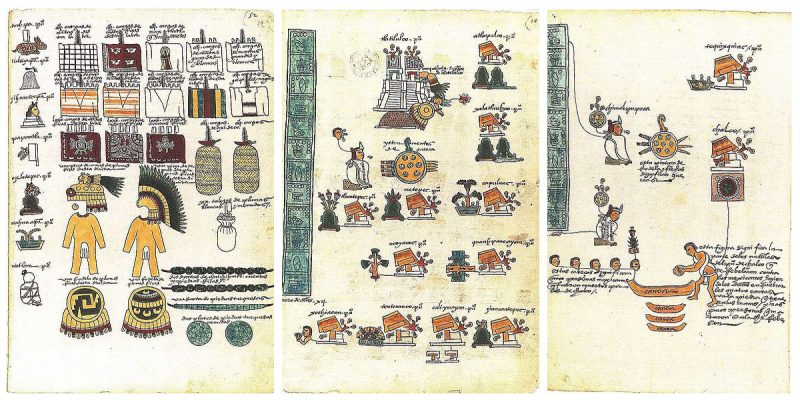The Codex Mendoza is an Aztec codex, created fourteen years after the 1521 Spanish conquest of Mexico with the intent that it be seen by Charles V, the Holy Roman Emperor and King of Spain. It contains a history of the Aztec rulers and their conquests, a list of the tribute paid by the conquered, and a description of daily Aztec life, in traditional Aztec pictograms with Spanish explanations and commentary.
The codex is named after Don Antonio de Mendoza, then the viceroy of New Spain, who may have commissioned it in 1542. It is also known as the Codex Mendocino and La colección Mendoza and has been held at the Bodleian Library at Oxford University since 1659. It was removed from a public exhibition on December 23, 2011.





The Codex Mendoza was hurriedly created in Mexico City, to be sent by ship to Spain. The fleet was attacked by French privateers, and the codex, along with the rest of the booty, was taken to France. There it came into the possession of André Thévet, cosmographer to King Henry II of France. Thévet wrote his name in five places on the codex, twice with the date 1553. It was later bought by the Englishman Richard Hakluyt for 20 French francs. After 1616 it was passed to Samuel Purchase, then to his son, and then to John Selden. The codex was deposited into the Bodleian Library at Oxford University in 1659, 5 years after Selden’s death, where it remained in obscurity until 1831 when it was rediscovered by Viscount Kingsborough and brought to the attention of scholars.



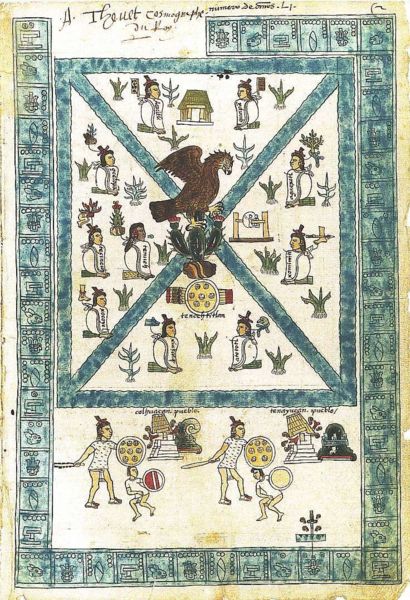
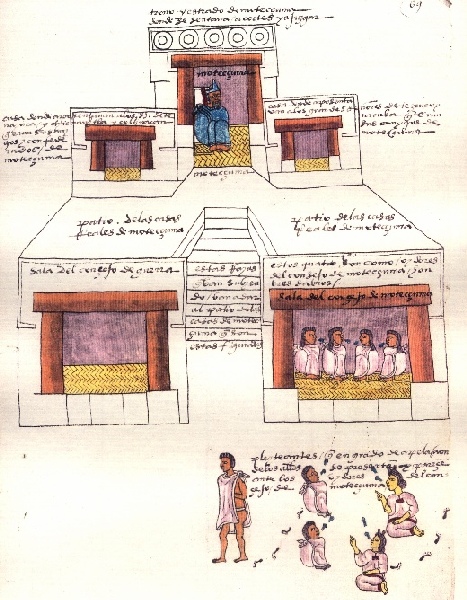
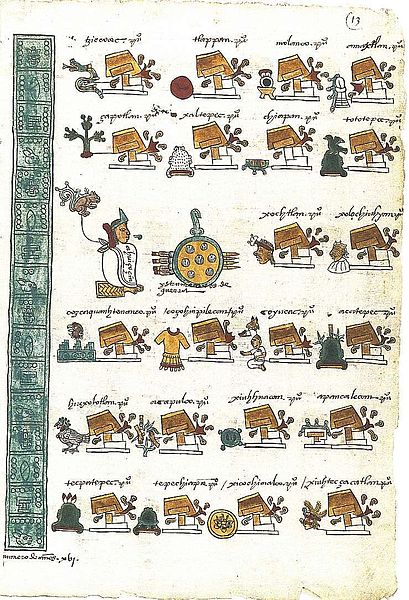
The Codex contains a wealth of information about the Aztecs and their empire. For instance, the Codex’s frontispiece relates information about the organization and foundation of the Aztec capital, Tenochtitlan, or the place of the prickly pear cactus. Tenochtitlan was established in the middle of Lake Texcoco in the Valley of Mexico in 1325. Given that much of the former Aztec capital is below modern-day Mexico City, the Codex Mendoza frontispiece corroborates other information we have about the capital city and its origins.
The city was made of canals, similar to the Italian city of Venice, and was divided into four quarters. The image displays the quadripartite division of the city and the canals running through it. The division of the city into four parts was intended to mirror the organization of the universe, believed to be four parts aligned with the four cardinal directions (north, east, south, west).
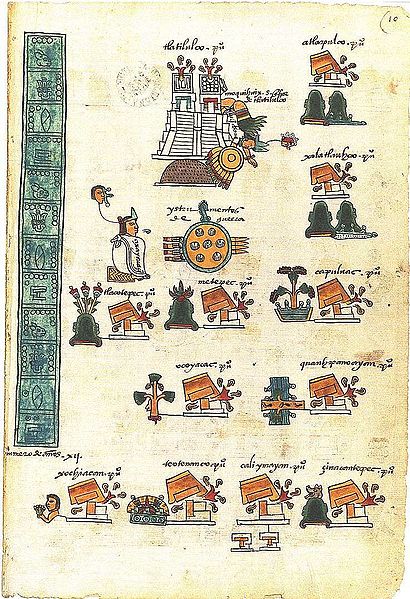
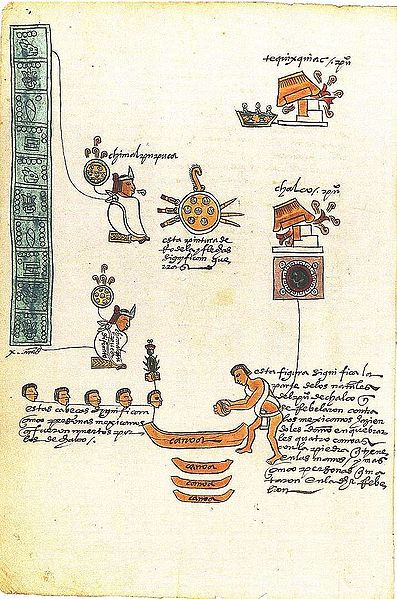
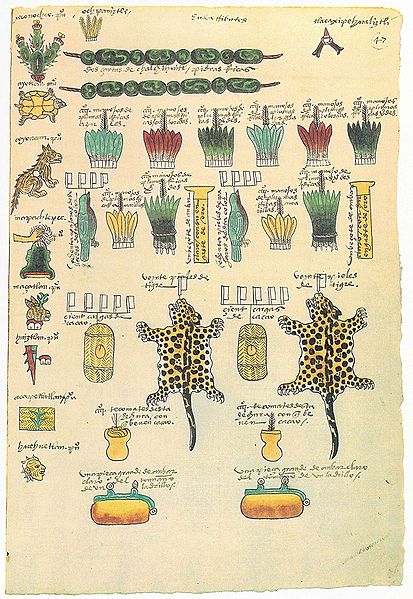
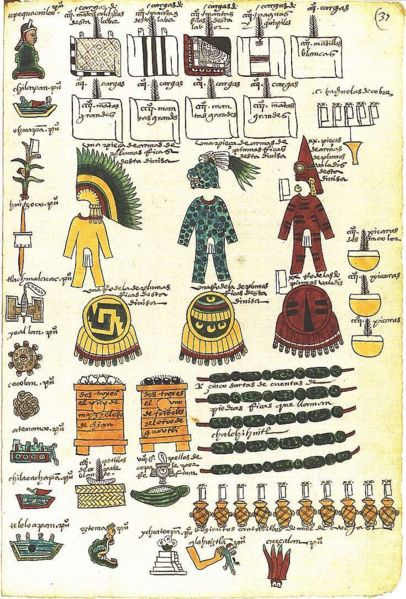
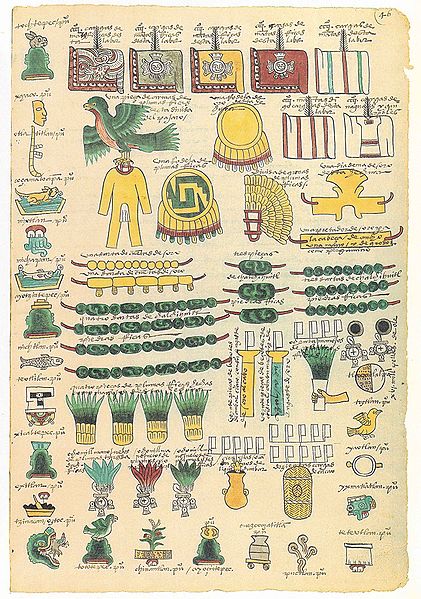
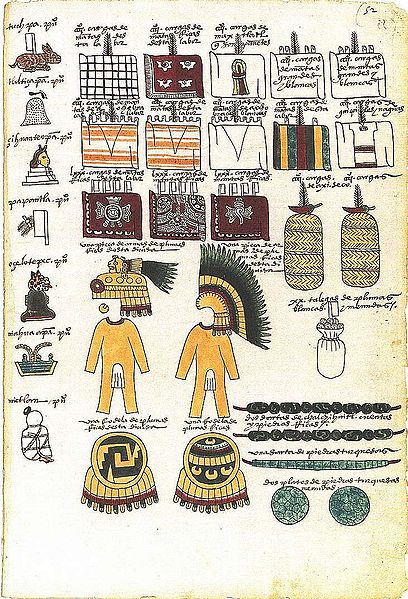
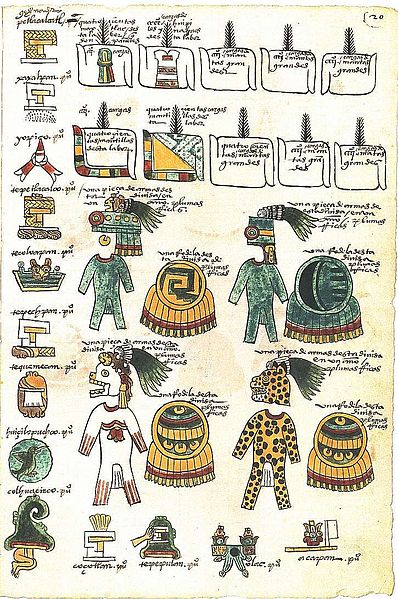
Written on European paper, it contains 71 pages, commonly said to be divided into three sections:
The first section (1-18r) starts from the pre-Conquest founding of Mexico City-Tenochtitlán (1324) to the Pacification of Mexico City (1522), a year after the death of its ruler, Montezuma. The second section (18v-55r) is similar to the Matrícula de Tributos, another summary of tributes to the Aztec capital. These first two parts reflect earlier pictorials from pre-Hispanic times. The third section (56v-71v) is about the everyday lives of native Mexicans, from birth to death. Robertson assumes that this section reflects the wishes of Mendoza to record the lives of the natives.
Photos: Wikimedia Commons
